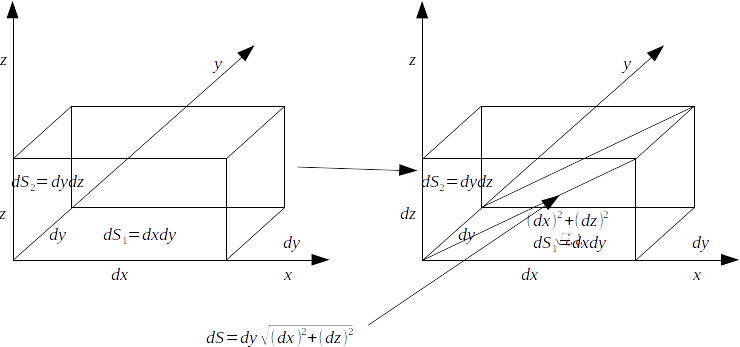\[dx,dy,dz\]
.
\[xy\]
plane is \[S_1 =dxdy\]
The area of the side in the
\[yz\]
plane is \[S_2 =dydz\]
The area of the rectangle formed by the diagonal shown is
\[S =dy \sqrt{(dx)^2 +(dz)^2}= \sqrt{(dxdy)^2 +(dydz)^2}\]
Then
\[(dA_)^2 = (dS_1)^2 + (dS_2)^2\]
We can extend this to three dimensions by noticing the surface of the cuboid in the
\[xz\]
plane is perpendicular to the diagonal surface above. Using the reasoning above for perpendicular areas gives \[(dA)^2 =(dS)^2 + (S_3)^2 = (dS_1)^2 + (dS_2) + (dS_3)^2\]
. 